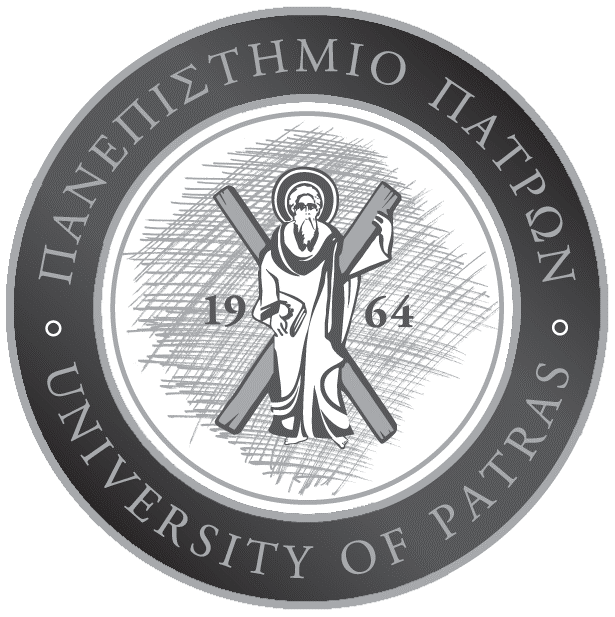Lecturer
Recommended Reading
Textbooks in Greek language
D. Skarlatos, “Materials with Applications in Microelectronics (Physics and Technology)”, University Notes, Patras, 2011.
L. Palilis, “Materials and Devices of Soft Condensed Matter”, University Notes, Patras
Textbooks in English
S. M. Sze. “Semiconductor Devices : Physics and Technology”, 2nd Ed., Wiley, (2002).
Polymers for microelectronics and nanoelectronics Qinghuang Lin, R. A. Pearson, Jeffrey C. Hedrick Americal Chemical Society, 2004.
Organic Electronics: Materials, Processing, Devices and Applications Franky So (ed.) Taylor and Francis, 2010.
Organic Electronics – Materials, Manufacturing and Applications Hagen Klauk (ed.) Wiley-VCH, Weinheim, 2006.
Course Description
Part A: Solid State Materials and Devices
1)Conductors, Dielectrics and Semiconductors: A phenomenological introduction in the theory of energy bands for solids. Diagram Ε-x. Kronnig-Penney model. Diagram Ε-κ.
2)Conductors: Free electron model, thermionic emission, phenomena upon interfacial contact between metals.
3)Semiconductors: Intrinsic and extrinsic semiconductors. Growth of homogeneously doped semiconducting substrates (Czochralski και Molecular Beam Epitaxy (MBE) methods). Statistics of charge carriers in equilibrium. Carrier generation and recombination out of equilibrium. Drift and diffusion currents in semiconductors. Continuity equation.
4) Semiconductor film development and processing in the micro/nanoscale: Metallic film development. Dielectric film development. Lithography and etching.
5) Inhomogeneous doping of semiconductors: Diffusion from the gas phase and ion implantation. p-n structures.
6)The ideal Metal – Dielectric – Semiconductor (MIS) structure: Definition and basic principles. The structure under application of an external voltage. Capacitance of the MIS structure.
7) Realistic MOS structures: Dielectric defects and influence on the capacitance.
8) MOSFET transistor: A phenomenological description of its operation principles. Miniaturization of MOSFET. Parasitic phenomena in small channel MOSFETs. CMOS technology.
Part Β: Organic Semiconductors and Organic Optoelectronic – Photonic Devices
1) Organic Semiconductors: Conjugated (Semi)Conducting Polymers and Small Organic Molecules. Thermal and Optical Properties. Electronic Structure and Properties. Excited States (Excitons). Photoluminescence. Mechanisms of Conductivity and Charge Carrier Transport – Influence of Doping. Correlation of Chemical Structure and Optoelectronic Properties.
2) Organic Optoelectronic – Photonic Devices: Light Emitting Diodes (OLEDs), Solar Cells (Photovoltaics) (OPVs), Field Effect Transistors (OFETs), Lasers. Deposition Methods/Techniques for Development of Thin Films and Devices, Operation Principles of Devices, Degradation Mechanisms.


